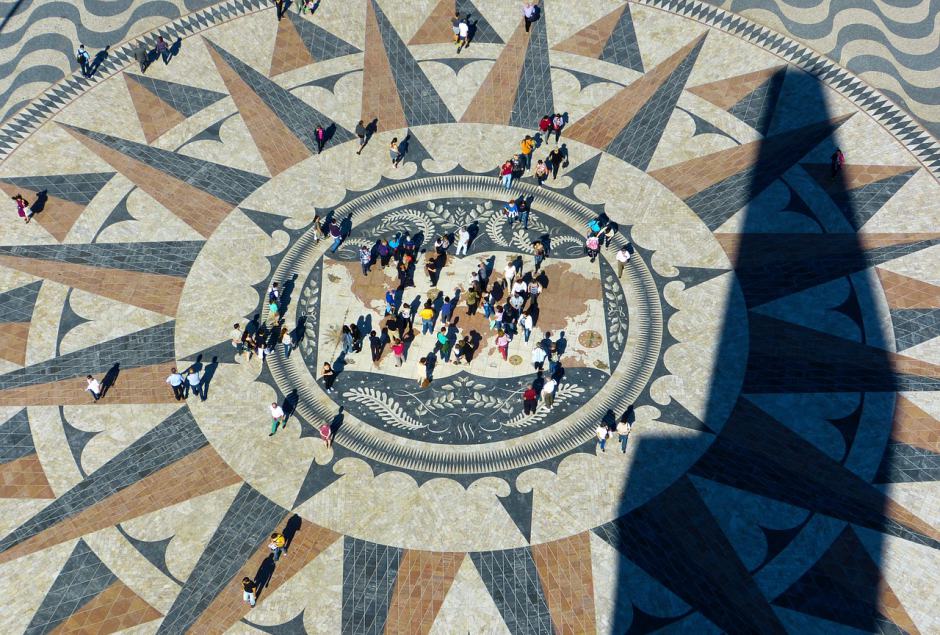If there’s one European capital that knows how to pull off a view, then it’s Lisbon. Whether it’s the result of conscious decision-making by the city’s developers and architects, or just serendipitous good fortune, it seems that every time you turn a corner you’re met with another incredible panorama.
It had been a decade or more since I’d first visited this city and I was excited to be back. Grabbing an impossibly cheap deal from Luton with easyJet, I left grizzly October skies tainted with fog to land in bright sunshine in the Portuguese capital. The temperature would soar to 33°C before the trip was done, yet I’d been on the plane only a couple of hours.
It was late enough that the commuters were ensconced in their offices, but early enough that the casual sightseers were still dithering over their leisurely breakfasts. I seized on the opportunity to ride Lisbon’s most famous tram, the Number 28, before it got so packed that I wouldn’t be able to enjoy the experience.

Even so, I was lucky to get a seat, wedged in beside an elderly lady wistfully gazing out of the open window and the thigh of a German tourist soon to find himself the unfortunate target of one of the pickpockets notorious for riding this route. A hand carefully placed on the zip of my handbag meant I could enjoy the sights without worrying as we rattled our way up from the Baixa to the historic Alfama district.
I alighted, possessions intact, at a terrace I remembered from my last visit and settled down at a cafe table to take in the view. Homes the colour of a Battenberg cake cascaded down the sloping ground towards the Tagus, the river that had begun its journey to the sea far away in the highlands of central Spain. This mirador, known as Portas do Sol, was popular with musicians and it wasn’t long before my foot tapped to a soundtrack of exotic Africa.
On the street behind me, the trams steadily disgorged more and more passengers, each more of a Tardis than the one it had followed. I decided to walk down to the Baixa, a route that would allow me to explore the azulejos of the Mirador Santa Lucia and the solid architecture of the city’s cathedral, more castle than church in appearance.
After that, the ground levelled out. As I crossed the Praça do Comércio, Lisbon’s vast downtown square, I could feel the heat burn my neck. Kids fresh out of school played around in the shallows, enjoying the cooling effect of the water and I rued that I wasn’t forty years younger.

This was the area of Lisbon that had been worst affected by the earthquake of 1755, a catastrophic event compounded by the tsunami that followed. An estimated 40,000 people lost their lives and much of the Baixa was destroyed to be rebuilt under the supervision of the Marques de Pombal with wider streets and spacious squares. Many of the buildings utilised rudimentary quake-proofing techniques, something that’s not seriously been tested since, despite Lisbon’s fault-line location.
From the square, it was an easy stroll to the Elevator de Santa Justa, constructed in 1902. Like the tram, it was a good way to avoid having to deal with Lisbon’s steep gradients and, having bought a day pass, I was pleased to find it was valid for the lift as well. The engineer responsible was Raoul Mesnier du Ponsard and looking at the elevator’s ironwork, it didn’t come as much of a surprise to learn that he’d once been a student under Gustave Eiffel.
Ginjinha & Going Further Afield
After dinner, there was just one thing left on my list for the day’s sightseeing and it came in a glass. A Ginjinha was a tiny hole-in-the-wall bar, little more than the size of a lottery kiosk, but famous for the sour cherry liqueur, Ginjinha, that I was reliably informed was Lisbon’s tipple of choice. Served in a shot glass with a piece of fruit at the bottom, its aguardiente base burned the back of my throat and made me squawk like a sparrow. The barman stifled a giggle. For a novice tourist drinker like me, it wouldn’t have been wise to make it a long night.
The following day, I woke up across from Rossio Square, the Escheresque quality of its floor more than a match for any hangover. I was glad I’d retired early the night before. A short walk away was Rossio station, a major factor in selecting the My Story Hotel Rossio, though regrettably I’d missed out on having one of their rooms overlooking the square itself.
After a scrum at the ticket office, I departed Rossio on a train bound for the pretty town of Sintra, half an hour distant. I spent a pleasant day wandering its cobbled streets, exploring its colourful Pena Palace, ruined castle and eclectic mix of souvenir shops and cafes housed in historic mansions.
Back in the city, one last train ride took me to Belem, a district a few miles west of the Baixa. There, I ticked off the Monument to the Discoveries, the Torre de Belem and the gardens of the Jeronimos Monastery, but my mind was on other things.

Specifically, it was actually my stomach that was doing the focusing and there was only one thing which would satisfy its cravings: the pastries baked on the premises at the Pasteis de Belem bakery. No secret find, a long queue snaked out of the door and down the street, but this was one crowd I was happy to be part of. Their signature custard tarts, served warm and crumbly since 1837, were a treat. Now if I could just psyche myself up for some more of those hills, they’d be guilt-free as well.